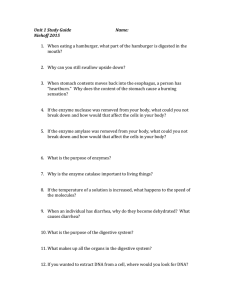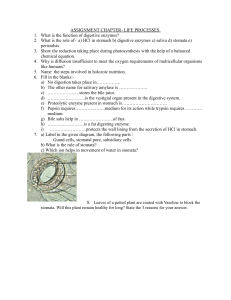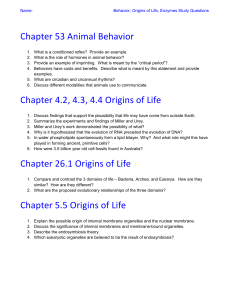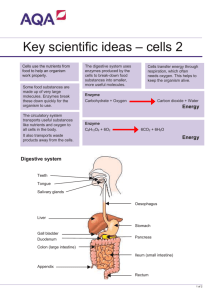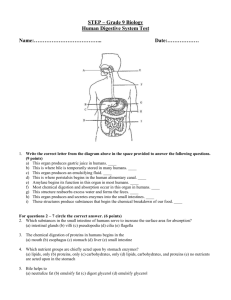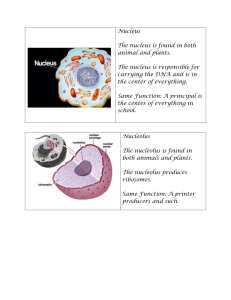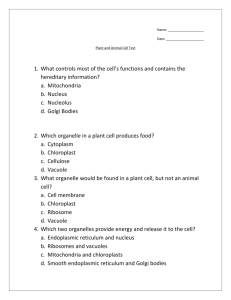Instructor`s Copy
advertisement
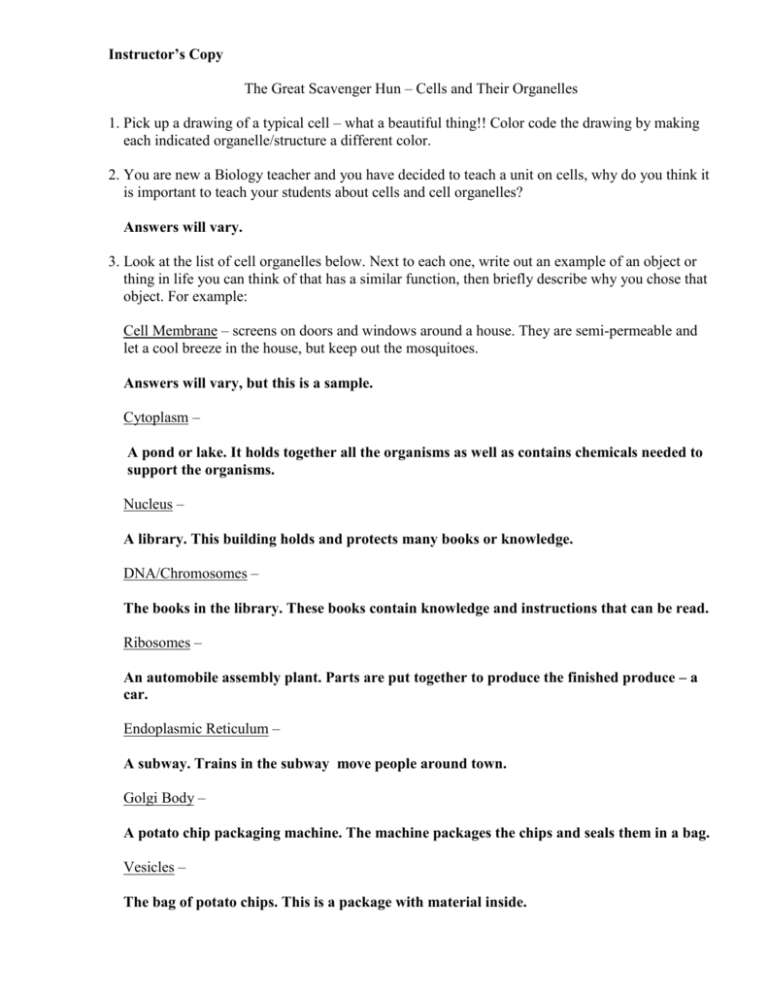
Instructor’s Copy The Great Scavenger Hun – Cells and Their Organelles 1. Pick up a drawing of a typical cell – what a beautiful thing!! Color code the drawing by making each indicated organelle/structure a different color. 2. You are new a Biology teacher and you have decided to teach a unit on cells, why do you think it is important to teach your students about cells and cell organelles? Answers will vary. 3. Look at the list of cell organelles below. Next to each one, write out an example of an object or thing in life you can think of that has a similar function, then briefly describe why you chose that object. For example: Cell Membrane – screens on doors and windows around a house. They are semi-permeable and let a cool breeze in the house, but keep out the mosquitoes. Answers will vary, but this is a sample. Cytoplasm – A pond or lake. It holds together all the organisms as well as contains chemicals needed to support the organisms. Nucleus – A library. This building holds and protects many books or knowledge. DNA/Chromosomes – The books in the library. These books contain knowledge and instructions that can be read. Ribosomes – An automobile assembly plant. Parts are put together to produce the finished produce – a car. Endoplasmic Reticulum – A subway. Trains in the subway move people around town. Golgi Body – A potato chip packaging machine. The machine packages the chips and seals them in a bag. Vesicles – The bag of potato chips. This is a package with material inside. Mitochondria – A flashlight battery. The battery supplies energy to power the flashlight. Cell Wall – A brick house. The bricks around the house protect it from the elements outside. 4. Take a deep breath. You have just inhaled a lung full of oxygen. Where in your cells will all of this oxygen end up? The mitochondria. 5. If a person chokes and can no longer get oxygen they will die (the same thing will happen to any plant or animal that can’t get oxygen!!). Why does a lack of oxygen kill things? Oxygen is required for respiration to occur in the mitochondria. Without oxygen, there would be no respiration and no energy could be supplied to the cell. The cell would die. 6. Which do you have more of in your body? Cells or ribosomes? Ribosomes, each cell contains many ribosomes) 7. Which do you have more of in your body? Cells or nuclei?? Actually, you have more cells – mature red blood cells don’t have nuclei. 8. You have just eaten a fresh hot slice of your favorite pizza. Your stomach cells immediately go into action to start digesting the pizza with digestive enzymes. A stomach cell first needs to get the instructions from the nucleus on how to make the digestive enzyme. The cell then constructs many of the digestive enzymes (a protein). The digestive enzymes are quickly transported through the cell to a place to be packaged. The digestive enzymes are packaged release the digestive enzymes into your stomach! The pizza is digested!! Put the organelles/structures below in the correct order that your stomach cells would use them as they produce and release digestive enzymes: DNA, cell membrane, vesicle, ER, Golgi Body, ribosome First DNA – contains enzyme instructions Ribosome – makes the enzyme ER – transports enzyme to golgi Golgi body – packages enzyme Vesicle – the package Cell membrane – package moves to cell membrane and pops open releasing enzyme 9. Which cell organelle or structure do you find the most amazing. Why? Answers will vary.
